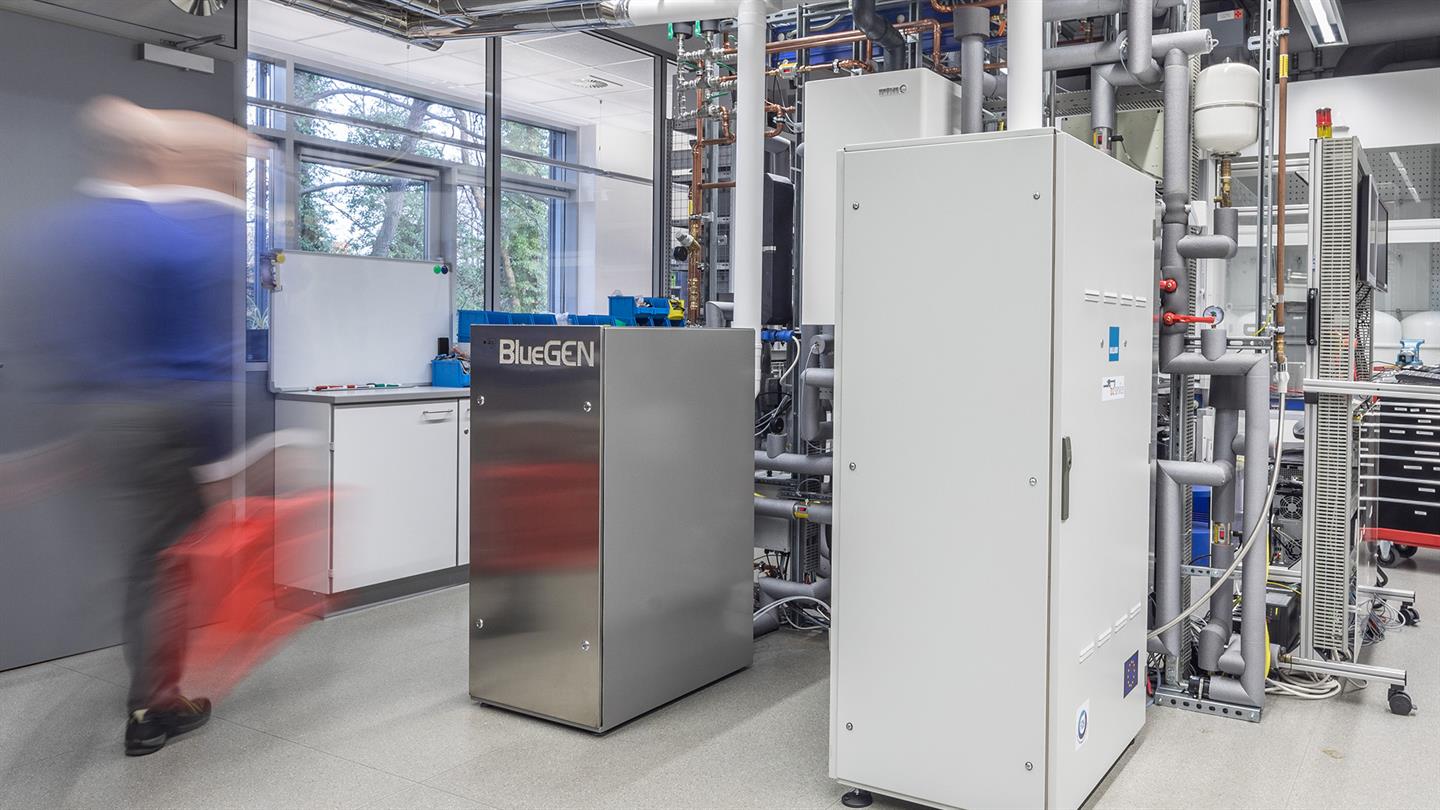
- In the research project D2Service (“Design of 2 Technologies and Applications to Service”), which is funded by the European Union, DLR cooperates with six partners from five countries.
- The aim is to adapt components, components and interfaces of different products to each other.
- In one of its main tasks, DLR has optimized the positioning of interfaces in order to simplify the replacement of wearing parts.
- As part of the project, a handbook has been developed for a clearer description of operating instructions for fuel cell systems.
- Focus (s): Energy
Electricity and heat can be generated particularly efficiently using combined heat and power (CHP).
In the future, CHP systems based on fuel cells will even be able to supply energy with zero emissions – and directly in the building as needed. So far, the combination of these two technologies is hardly common, not least because there is a lack of trained technicians.
The German Aerospace Center (DLR), together with six partners from five countries, has funded the research project D2Service funded by the European Union so that more service staff can now look after the systems(“Design of 2 Technologies and Applications to Service”) developed simplified solutions for installation and maintenance. In July 2019, the first seasonal viewing of the final approximately twelve-month field test ends. Interim conclusion: All prototypes run trouble-free, there were no problems with operation and maintenance.
Maintenance with less effort and longer intervals
“Due to their high electrical efficiencies, fuel cell-based CHP systems are virtually indispensable for the design of the future energy system, so we want to contribute to greater dissemination and lower costs with the D2Service project. Intervals longer, “says Marco Zobel, head of the research group” Sector Coupling Gas Technology “at the DLR Institute for Networked Energy Systems . One focus is on the simpler design of interfaces to minimize errors in the exchange of components. Another focus is on making the instructions for typical work steps clearer across languages.
Match components of different products
Currently, the few trained technicians throughout Europe have to travel long distances to work on the equipment. “While classic heating systems are maintained by a tight network of specialist heating contractors, CHP systems are unfortunately much more specific, requiring an expert with a special qualification even for a simple cartridge change, which adds to the cost,” says Zobel the manageable spread of the technique.
This is where the D2Service concept comes in: In cooperation with manufacturers and suppliers, ways were sought to adapt components of different products to one another. “For example, we faced the challenge of standardizing the connections and the positioning of filters in different, already market-ready products,” says Zobel. “Not only do we want to facilitate the exchange, but we also want to make it impossible for filters or cartridges to be inserted the wrong way round.”
Use synergies across technologies
As a particular challenge, the project team had to deal with two technologically different fuel cell systems based on different operating modes: a high and a low temperature model. Here, too, there are conceivable synergy effects for Zobel, for example through the development of uniform cartridges: “That’s just like gasoline and diesel: despite all the differences, both need a fuel tank.”
Intuitive imagery illustrates complex work steps
With the development of a handbook for a clearer description of fuel cell system manuals, the Institute of Networked Energy Systems has taken a second approach to making it more user-friendly. The booklet gives manufacturers concrete advice on how to visualize complex technical work steps based on color codes, the type of illustrations and an intuitive visual language with pictograms. The project partner SOLIDpower has already revised its manual according to these suggestions.
Practical tests in Italy and Germany
The CHP systems with the technical optimizations and the maintenance instructions will be tested until the spring of 2020 in the very real everyday operation in a construction market, a clubhouse and a commercial building in Italy. A fourth facility is currently undergoing a multi-month time-lapse test at the Institute for Networked Energy Systems based on the typical energy flows of a small apartment building. If everything goes as planned, the project participants hope to win more service providers in the future without special expertise for the maintenance of fuel cell-based CHP plants.
The project D2Service
In the D2Service project, the Institute for Networked Energy Systems has been cooperating since August 2015 with the research partners Ballard Power Systems (Denmark), SOLIDpower (Italy), Bosal Emission Control Systems (Belgium), Energy Partner (Italy) and the Duisburg Center for Fuel Cell Technology (ZBT). The research project on the European funding measure “Fuel Cells and Hydrogen 2 Joint Undertaking”, Grant Agreement Number 671473, which is supported by the European Union’s Horizon 2020 Research and Innovation Program, will be funded.
Read the most up to date Fuel Cell and Hydrogen Industry news at FuelCellsWorks




